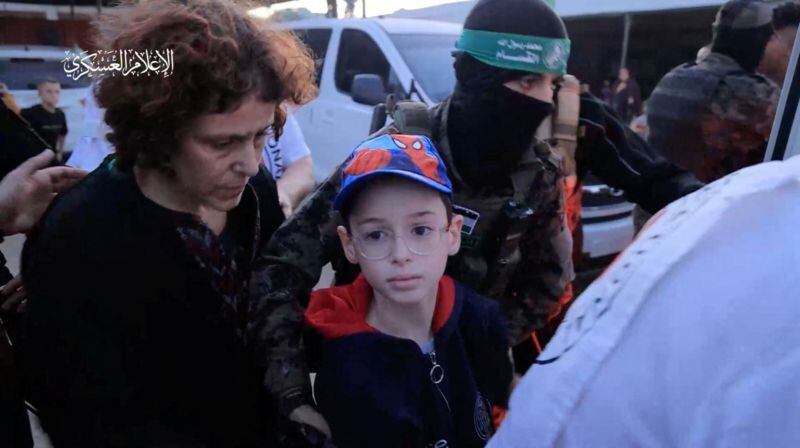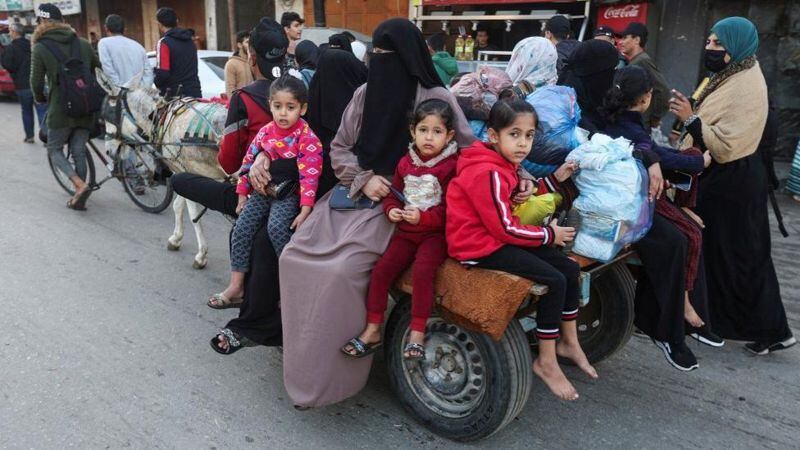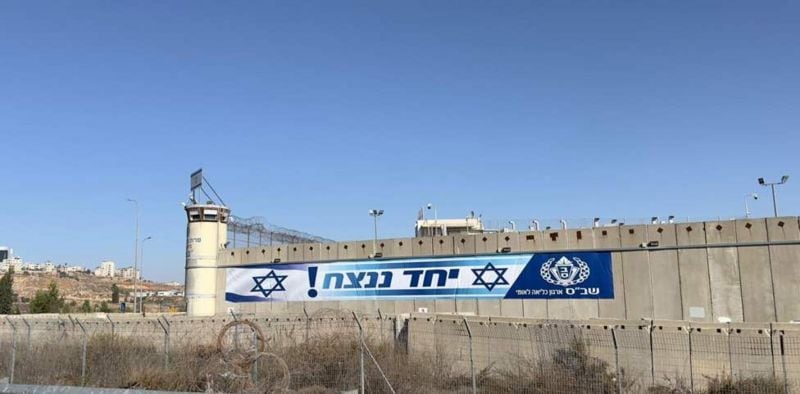Hamas It is Israel exchanged hostages and prisoners this Friday as part of the agreement that includes a four-day ceasefire in the Gaza stripthe first since the conflict began on October 7.
The Islamic group Hamas freed 24 hostages, while Israel handed over 39 Palestinian prisoners.
LOOK: What are the differences between Sunnis and Shiites that are behind the conflicts in the Middle East
The Palestinian organization that governs Gaza, considered terrorist by the United States and the European Union, handed over the abducted people to the Red Cross, which He transported them in several vehicles across the southern border of the Strip into Egypt..
Israeli hostages
The group released by Hamas is made up of 13 Israeli citizens, 10 Thais and one Filipinoinformed the Qatari Ministry of Foreign Affairs, mediator in the negotiations.
Israel confirmed that its 13 citizens are already in the country.
The group is part of 50 hostages – including women and minors – that, under the terms of the agreement, Hamas agreed to release in several batches during the four-day truce.
Palestinian radical Islamic organization kidnapped 240 people during a massive attack on Israeli territory on October 7, in which 1,200 people died.
Israel’s response caused around 14,000 deaths in Gaza.

The hostages transferred to Israel are in the custody of the country’s special forces and security services, the Israel Defense Forces (IDF) said.
They indicated that those released underwent an initial medical evaluation and were transferred to hospitals in Israel, where they will be able to reunite with their families.
“The IDF, together with the entire Israeli security system, will continue to work until all hostages return home,” the IDF said in a statement.
All group members They appear to be in good health.Israeli medical authorities reported.
The head of Israel’s ambulance service, Eli Bin, also confirmed that 13 of the hostages were Israelis and 11 were foreigners.
The President of the United States, Joe Biden, declared about the launch that “it is just the beginning, but so far everything has gone well”.
“We will not stop,” said the American president, until all hostages have returned to their homes.
Palestinian prisoners
Hours after the release of the Hamas hostages, Israel sent back to Palestinian territory 39 prisoners convicted of various crimes, most of them violent attacks against Israeli security forces.
The handover took place at the Beitunia border post in the West Bank, near the city of Ramallah, Israel confirmed.
The 39 Palestinian prisoners were chosen from a list compiled by Israeli authorities, consisting of 300 women and young peoplewho were accused of various crimes, from throwing stones to attempted murder.
The vast majority of them are detained without being subjected to trial and many of those on the list are male teenagers: 40% are under 18 years of age.

The agreement provides that some 150 Palestinian prisoners in Israeli prisons are released.
The ceasefire came into force this Friday, after an unstable start, punctuated by sporadic sounds of explosions.
Both parties said the break would be temporary and last four days.
BBC journalist Anna Foster, who is in southern Israel, noted that the Israeli army continued its operation until the start of the ceasefire and, apparently, until shortly after it began.

Aid to Gaza
Since the beginning of the truce, they have entered Gaza at least 60 trucks with relief supplies.
Israel indicated that eight of them brought fuel in accordance with the agreement, which specifies the delivery of 130,000 liters daily.
This states that, on each of the four days, 200 trucks carrying aid, such as medical supplies, water and food, four tanker trucks and four trucks carrying cooking gas will enter Gaza through the Egyptian Rafah crossing.
“Israel insisted for many days that fuel should not go to Gaza because they said there was already fuel that Hamas was hoarding and they feared that if they sent more fuel, the militants would take it and use it as part of their operations against Israel,” it says journalist Anna Foster.
However, the guarantee stipulated in the agreement is that the fuel will be taken directly to the places that need itsuch as hospitals, and will not be allowed to reach Hamas.

The International Committee of the Red Cross (ICRC), which monitors the implementation of the pact, highlighted that the operation will also “include the delivery of additional humanitarian assistance” to Gaza.
He also expressed his intention to send medical supplies to hospitals strip as part of the operation.
Most hospitals, especially in the north, have stopped functioning or are overwhelmed by the rush of patients.
However, the process remains very complex: UN aid agencies are also sending supplies to Gaza, but today expressed doubts when asked whether they would be able to deliver them to the north of the Strip.
Although the four-day ceasefire agreement suggests that all areas should be accessible to organizations providing aid, Israel has demanded that Palestinians now displaced in the south remain there.
A call not to return
In a message published in Arabic on social media, the Israeli military reminded Palestinians that the humanitarian pause is only temporary and warned that the war is not over and that they were prohibited from moving to the north of the territory.

According to Foster, the IDF has been releasing leaflets since the morning warning civilians inside Gaza that don’t go north.
“Due to this unusual calm, we know that many of them will take advantage of this opportunity, and have already done so, to start returning to their homes to perhaps collect some goods and, in some cases, to check whether their homes are still standing. “.
The IDF told them they must remain in the southern part of the Gaza Strip. They reiterated that the northern part is still a war zone.
“The pause is having a huge effect on civilians inside Gaza. We have learned that the first public Friday prayers since the start of the war will be held in an open football stadium in Khan Yunis.”
Ismail Haniya, political leader of Hamas, said that the group is committed to the truce with Israel and the hostage exchange agreement, as long as “all parties” respect it.
Haniya, who lives in Qatar and heads Hamas’s political office, also noted that the negotiations were “difficult”.

Children under the rubble
On the other hand, in an interview with the BBC, James Elder, spokesman for Unicef, highlighted that Palestinians in Gaza could take advantage of the truce to look for children under the rubble.
“Maybe the ceasefire will give people the opportunity to look for your relatives“Maybe this will give families the opportunity to bury the dead,” said the official who arrived in Gaza on Thursday.
Elder indicated that everything bears signs of devastation. “Whether it’s the children’s frightened faces or the broken walls and windows, it all tells the story of this relentless attack.”
_______________________
The release of Palestinian prisoners: threat and symbol
Lucy Williamson, BBC News West Bank journalist
The bus moved slowly through a sea of enthusiastic Palestinian supporters.
Through the windows it was possible to see some prisoners dancing, including one of them wrapped in a Palestinian flag.
Outside, cell phones were glued to the window amid shouts of welcome and proclamations of “God is great”.
Some in the crowd waved Hamas flags, while others tonight alluded to Palestinian unity, to a small moment of victory for Palestinians in the midst of an exhausting war.
For Israel, the prisoners released tonight are a threat to its security. For the Palestinians who receive them, they are victims of the Israeli occupation and their liberation is a symbol.
Source: Elcomercio
I am Jack Morton and I work in 24 News Recorder. I mostly cover world news and I have also authored 24 news recorder. I find this work highly interesting and it allows me to keep up with current events happening around the world.

:quality(75)/cloudfront-us-east-1.images.arcpublishing.com/elcomercio/PDGSV5SLBRC6DAR3I64FVWZ23U.jpg)

:quality(75)/cloudfront-us-east-1.images.arcpublishing.com/elcomercio/BFSB32EFLBDUZK3QEJYUQEUMZY.jpg)
:quality(75)/cloudfront-us-east-1.images.arcpublishing.com/elcomercio/6WHY5WF7YJAFBOFWKYHZNC2WAY.jpg)
:quality(75)/cloudfront-us-east-1.images.arcpublishing.com/elcomercio/WETFOGEJXNA3DNYBH7U2U74GMM.png)
:quality(75)/cloudfront-us-east-1.images.arcpublishing.com/elcomercio/7XBPETG4ONAO5DIYUNGJU2NXXQ.jpg)
